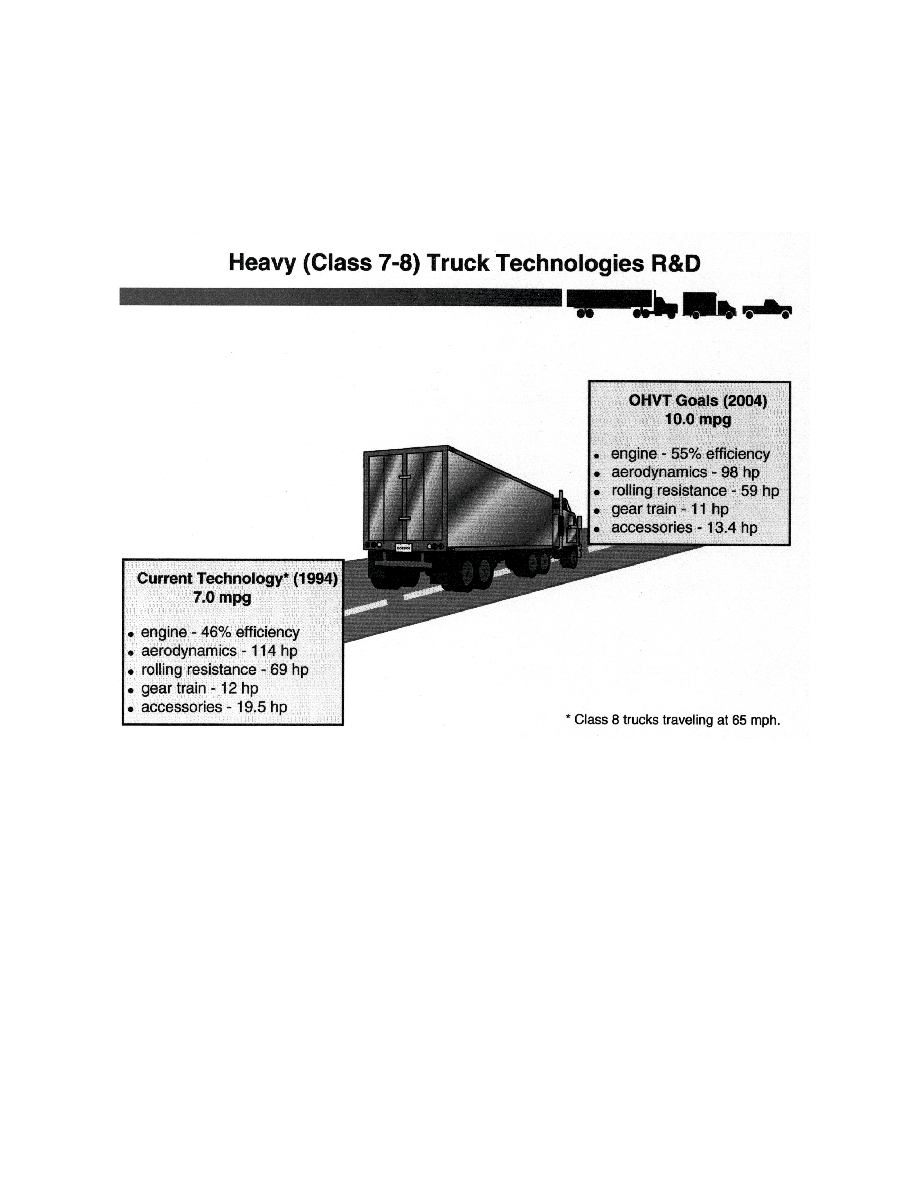

7
The above fuel-efficiency goals were established before issuance of the consent decree between
the engine manufacturers and the U.S. Environmental Protection Agency (EPA), which will
require accelerated reduction of emissions. Those goals will now be even more challenging
because methods to reduce emissions probably will cause a 5 to 10% decrease in fuel efficiency
by 2007.
the engine manufacturers and the U.S. Environmental Protection Agency (EPA), which will
require accelerated reduction of emissions. Those goals will now be even more challenging
because methods to reduce emissions probably will cause a 5 to 10% decrease in fuel efficiency
by 2007.
Figure 1. Goals for Class 7 and 8 Trucks
The OHVT Advanced Heavy Vehicle Technologies R&D program has the following
two-pronged approach:
two-pronged approach:
(1)
A partnership with the domestic transportation industry, energy-supply industry,
other federal agencies, and research and development organizations to develop
high-efficiency engine technologies and alternative-fuel utilization technologies
for trucks and to promote their acceptance. The technologies that were
determined to have the greatest market applications and thus fuel savings are
other federal agencies, and research and development organizations to develop
high-efficiency engine technologies and alternative-fuel utilization technologies
for trucks and to promote their acceptance. The technologies that were
determined to have the greatest market applications and thus fuel savings are
·
Diesel for light trucks and sport utility vehicles.
·
Advanced diesel for Class 3-8 trucks with enhanced fuel flexibility.
·
Improved near-term natural gas engine for buses and trucks.
·
Advanced natural gas engine with diesel-equivalent efficiency.
(2)
Continuing development of key enabling technologies to ensure market success: